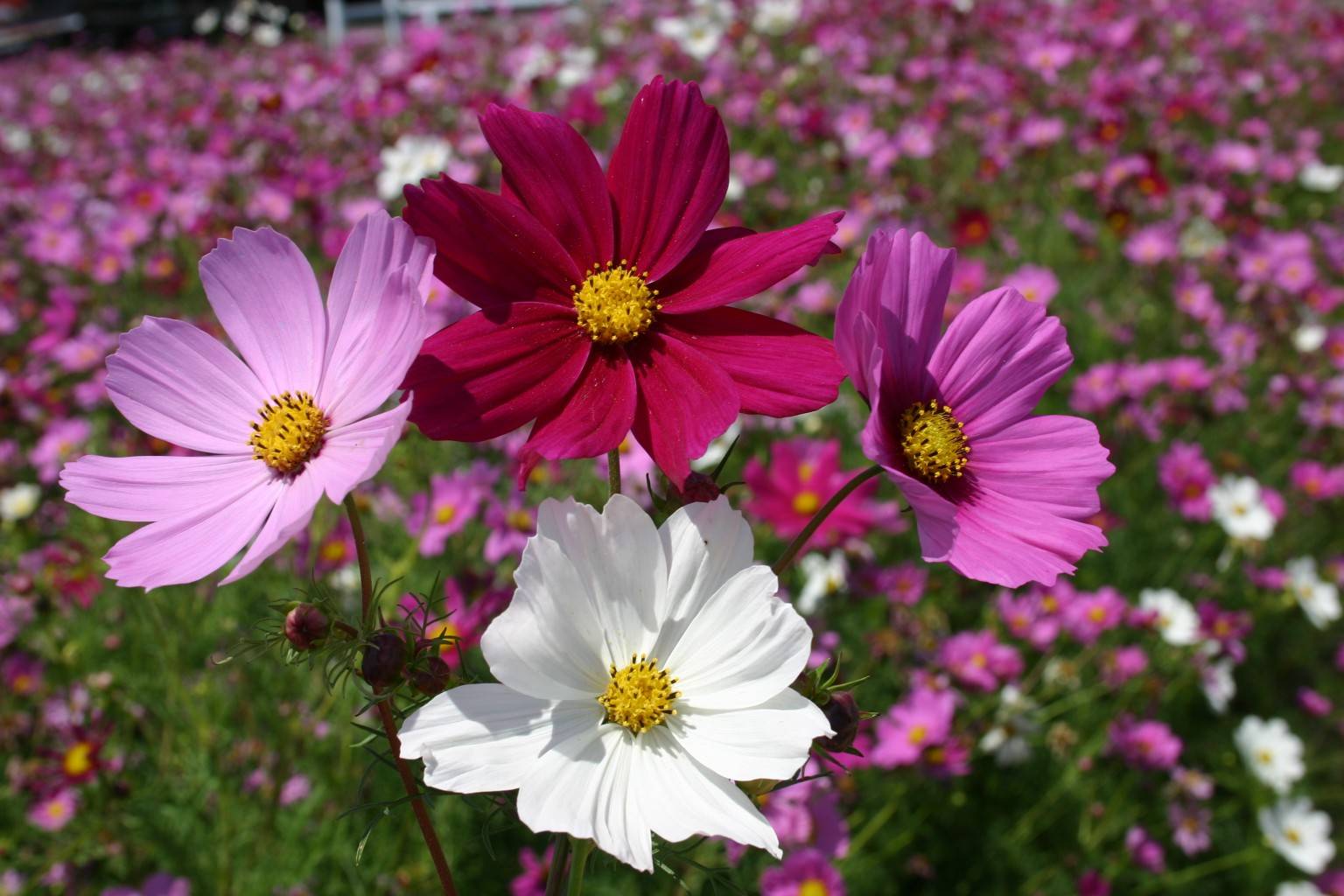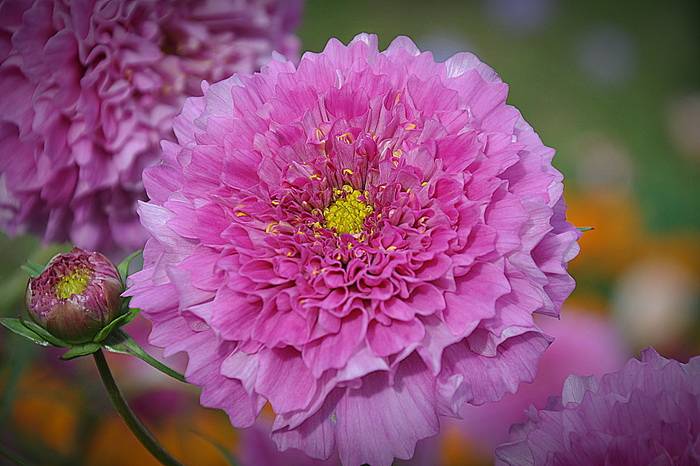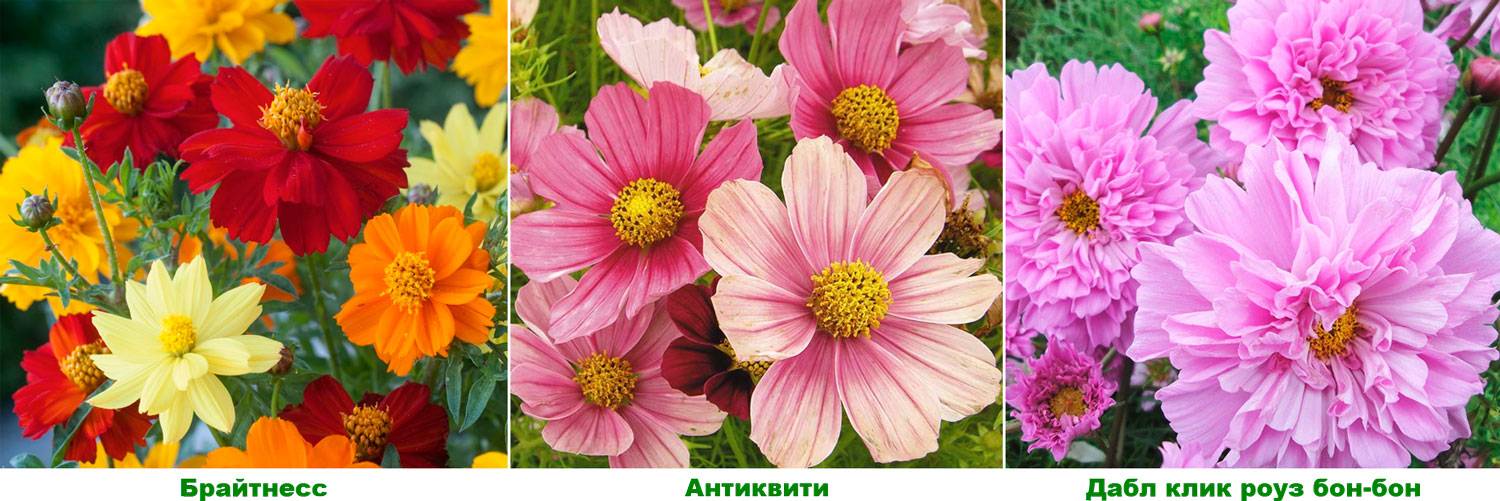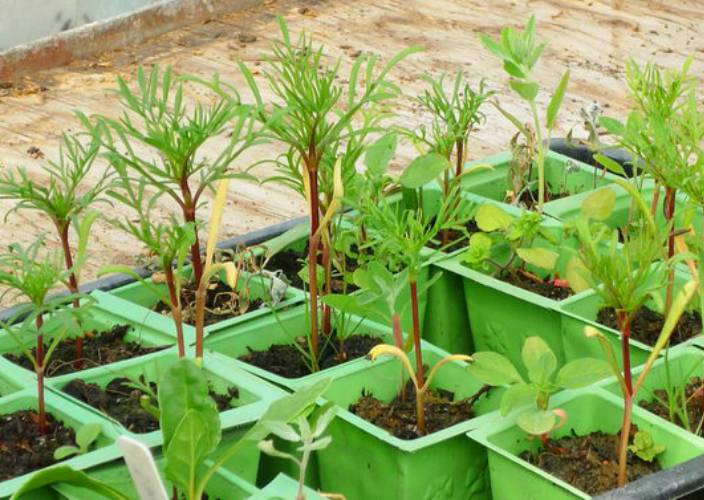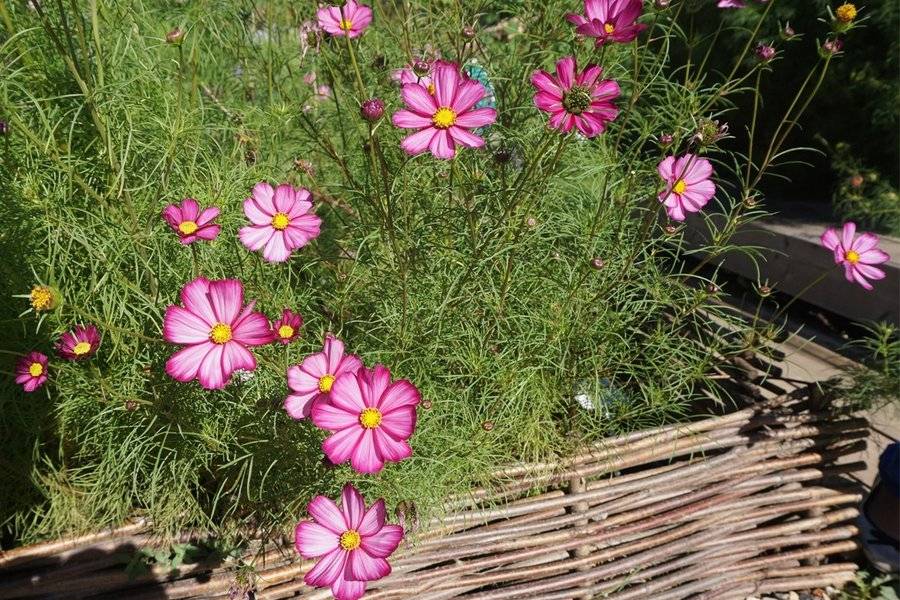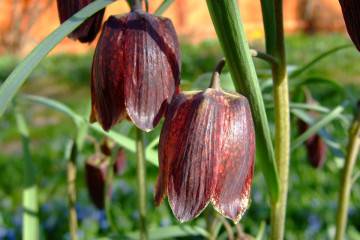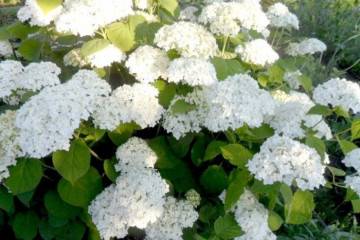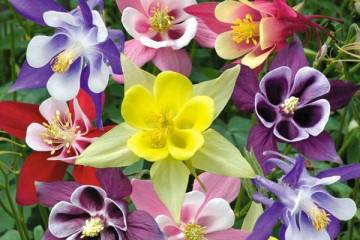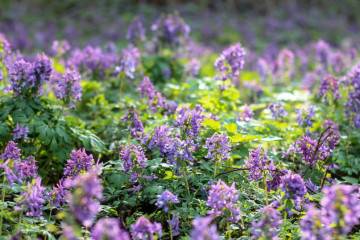Kosmeya flower
Content:
The flora is beautiful and diverse. Kosmeya is a flower, a perennial representative of the Asteraceae family. Its other name is Mexican aster, or space. Why is it called that? Because it owes its origin to the ancient Greek word "kosmeo", meaning "decoration". Indeed, the unique appearance attracts the attention of many housewives seeking to plant a flower in their possessions in the Moscow region and other regions of Russia.
The origin and appearance of cosme
The homeland of cosmos, a perennial flower, is the subtropical and tropical regions of America. Most species are found in Mexico. There are 25 plant varieties in the world. In middle latitudes, the most popular are the sulfur-yellow kosmeya and the double-pinned kosmeya.
Despite the fact that the flower comes from tropical places, it feels great in the climatic conditions of Russia, even in its northern regions. Cosmos flowers are a great option for decorating any flower bed, especially one where the land is deserted and dry. Flower arrangements are ideal for floor vases.
Description of the flower
Kosmeya - flowers, which are unpretentious to care for and grows in the form of a small bush. The description indicates that the plant can reach 1.5 m in height. It is characterized as erect with slender but flexible shoots. The leaf plates are usually opposite. They are cut twice, which makes them graceful and delicate.
The flowers of the plant look like chamomile. In diameter, they can reach 12 cm. Usually these are single flowers, but they can be part of inflorescences that have a panicle appearance. Most often, the petals are painted in white, burgundy, orange, yellow-gold and red shades. Recently, such a plant variety as terry has been especially popular. It can bloom several times a year for two to three years.
Types and varieties
Currently, only three varieties of the plant are grown universally. One of them is perennial, two are perennials. Breeders are constantly crossing different varieties of plants, getting new ones. This is painstaking work, which sometimes gives an amazing and unique result.
Terry kosmeya
Terry kosmeya in another way is called "cosmic beauty". In height, it usually reaches 1.5 m, it is distinguished by openwork-terry petals. Flowers can be of any shade: from white to red. The most popular varieties of the species are:
- Snow click;
- Psyche;
- Pink lollipop;
- Sea shell;
- Cranberry click;
- Orange;
- Iridescent overflows;
- Ladybug.
Kosmeya chocolate
Another name for chocolate cosme is black or blood-red cosme. Its inflorescences are colored maroon. The homeland of this species is Mexico. The flowers exude a chocolate smell. The plant is perennial, it is thermophilic, and therefore, growing it in the garden, you will have to cover it for the winter. The following varieties are considered the most popular:
- Brightness;
- Antiquity;
- Double click rose Bonbon.
Kosmeya perennial
Perennial kosmeya is the best garden decoration. It propagates by cuttings and blooms before the onset of frost. Withstands not only drought, but also light frosts.Growing in sun-drenched areas, it boasts a large number of inflorescences on the stem, while in shaded areas it stands out thanks to the fluffy stems.
Cosmeya double-feathered
Double-feathery cosmea is classified as annuals. Its homeland is the mountainous regions of Mexico. Usually, the height of the bushes varies from 0.8 to 1.5 m. Inexperienced plant breeders may confuse the leaf plates with those of dill. The size of the inflorescences in diameter varies from 7 to 10 cm.
Flowers can be white, purple, red or pink. In the middle of the inflorescence is a small yellow disc. The described species blooms magnificently. They began to breed it back in 1799.The most common varieties of the species today are:
- Dazzler;
- Purity;
- Sonata Pink Blush.
The last variety belongs to undersized plants.
Kosmeya sulfur-yellow
Sulfur-yellow cosmea began to be grown in Latin America. This species is thermophilic and belongs to annuals. The height of the bushes usually reaches 1.5 m. Flowers usually have a yellow tint. Common varieties of the species, cultivated since 1799, are:
- Bilbo;
- Crest Lemon;
- Diablo.
Cosmeya sensation
Cosmeya sensation is a tall plant. The bush reaches a height of 0.9-1.2 m, in width it can grow by 30 cm. Inflorescences are usually painted in several shades at the same time, they are quite large, can be 10 cm in diameter. Plant breeders recommend planting this variety along with carnations, chamomiles, marigolds - these are the best neighbors.
Common varieties are:
- Mix of colors;
- white;
- Crimson;
- Candy strike;
- pink.
Kosmeya yellow
The yellow kosmeya is usually considered one of the varieties of the sulfur-yellow species. Flowers can be bicolor or monochromatic. In the first case, such a result is obtained with artificial breeding. Growing such a cosmos is not difficult, it does not need special care. Like other varieties, yellow reaches 1.5 m in height, boasts large inflorescences, the size of which is 12 cm in diameter.
Growing cosmos from seeds
Kosmeya, planting and care in the open field for which is not difficult, can be grown in several ways. The most common option is to obtain flowers from seeds. In this case, they must be planted either directly in the ground or in pots to grow seedlings.
In the latter case, the results will be faster. Seeds are planted in pots in March or April. Do not press them into the substrate, as they are characterized by increased light sensitivity. Crops are moistened, covered with foil and placed in a lighted place.
If everything was done correctly, then the first shoots will appear within one to two weeks. With an excessive density of seedlings, you will have to thin them out so that the distance between them is from 10 to 15 cm. Instead of thinning, you can dive them. Next, the seedlings are placed in a cooler place.
It is recommended to plant it in open ground in early June. Plant height should be at least 6 cm. The soil should be loose, drained, and the place should be lighted, protected from the wind. If these conditions are met, abundant flowering can be achieved already in July.
Kosmeya: growing from seed, when planting outdoors
These actions are recommended to be performed in the spring, immediately after all the snow has melted.On the surface of the soil, beds are made, the distance between which should be at least 0.3-0.4 m. 3-4 seeds are laid in them to a depth of not more than 1 cm and sprinkled with a thin layer of earth.
Cosmeia care
Kosmeya is a perennial plant that does not require special care. Even beginners who have recently been improving their site can grow it. It is enough to follow the basic rules of care so that the perennial will please with its beautiful appearance for a long time:
- water the plant every seven days;
- use a sufficient amount of water for irrigation (40-50 liters should go under the bush);
- loosen the ground around the flowers after watering;
- weeding regularly;
- feed the flowers several times a year: before the buds appear, during the budding period, after their flowering;
- to pick off wilted flowers in a timely manner;
- cut off heavily overgrown bushes.
After flowering, it is recommended to cut the bushes. Their maximum height should be 15 cm. In winter, the plant is covered with spruce branches to avoid death from frost.
Landscape designers recommend using cosmea to decorate areas along paths and in rocky gardens. It is best to plant several varieties in one place, then the composition will turn out to be really unusual.
